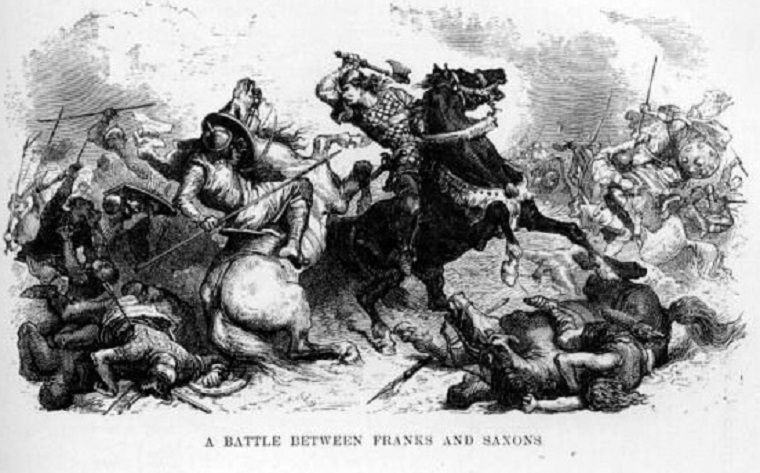They lived along the Baltic coast and in the area of modern Schleswig, and although the Roman historian Tacitus knew nothing of them when he wrote the Germania in the 1st century CE, they surely were to play a prominent role in the following centuries.
The Saxons were a Germanic tribe who appeared in all its power during the fifth century CE, and massively contributed to the fall of the northern provinces of the Western Roman Empire. They extended along the North Sea coastline gaining fame as pirates, reaching Gaul and Britain, and influencing other peoples such the Frisians, their neighbours. The British Isles surely were their best conquest, as they took control of most of the country alongside the Angles and the Jutes.
However, there was another Germanic power which sought control over central Europe: converted to Christianity a few centuries before, the Franks could not tolerate the Saxon growth, so, in the year 772 CE, the Frankish king Charlemagne brought war upon the Saxons with the very goal of including them in his empire and converting those lands to the new religion.
Proud and loyal to their traditions, the Saxons bravely resisted for 32 years before they were defeated.
Much of what we know of the Saxons comes from the writings of the Venerable Bede who, in his Historia Ecclesiastica, ca. 731 CE, named the invaders of Britain as being the Angles, the Jutes, and the Saxons, who – divided into West, South and East Saxons – were descended from the Saxons of Germany. However, they were all related and spoke, on a large scale, a mutually intelligible language, so it is difficult to say whether Bede was referring to the Saxons or the Angles. He was not the only one who confused the Saxons with other peoples: around two hundred years before, Procopius, in his Gothic Wars, spoke of the Frisians – along with the Angles and the Britons – as being the inhabitants of Britain, obviously misunderstanding the common features of Frisians and Saxons, taking one for the other.
In terms of language, whilst, as we said, the Saxons of England retained those mutually intelligible characteristics with the other Germanic tribes, on the continent we can assist to a change that brought the Saxon language to be gradually more similar to High German, losing, after the 9th century, the traits typical of their relatives abroad.
Continental Saxons spoke the so-called Old Saxon, from which derives the modern Low German; the first appearance of this characteristic West Germanic brogue dates back to the ninth century, when many texts were written under the Carolingian rule to spread both the evidence of the Saxon conversion and the principles of the new doctrine, such as in the Heliand (Old Saxon for “Saviour”), which is arguably the most important of those texts.
After that point, we can say that the last true pagan defence against Christianity – at least on the continent – had fallen, leaving behind the gods who had brought them to greatness.
